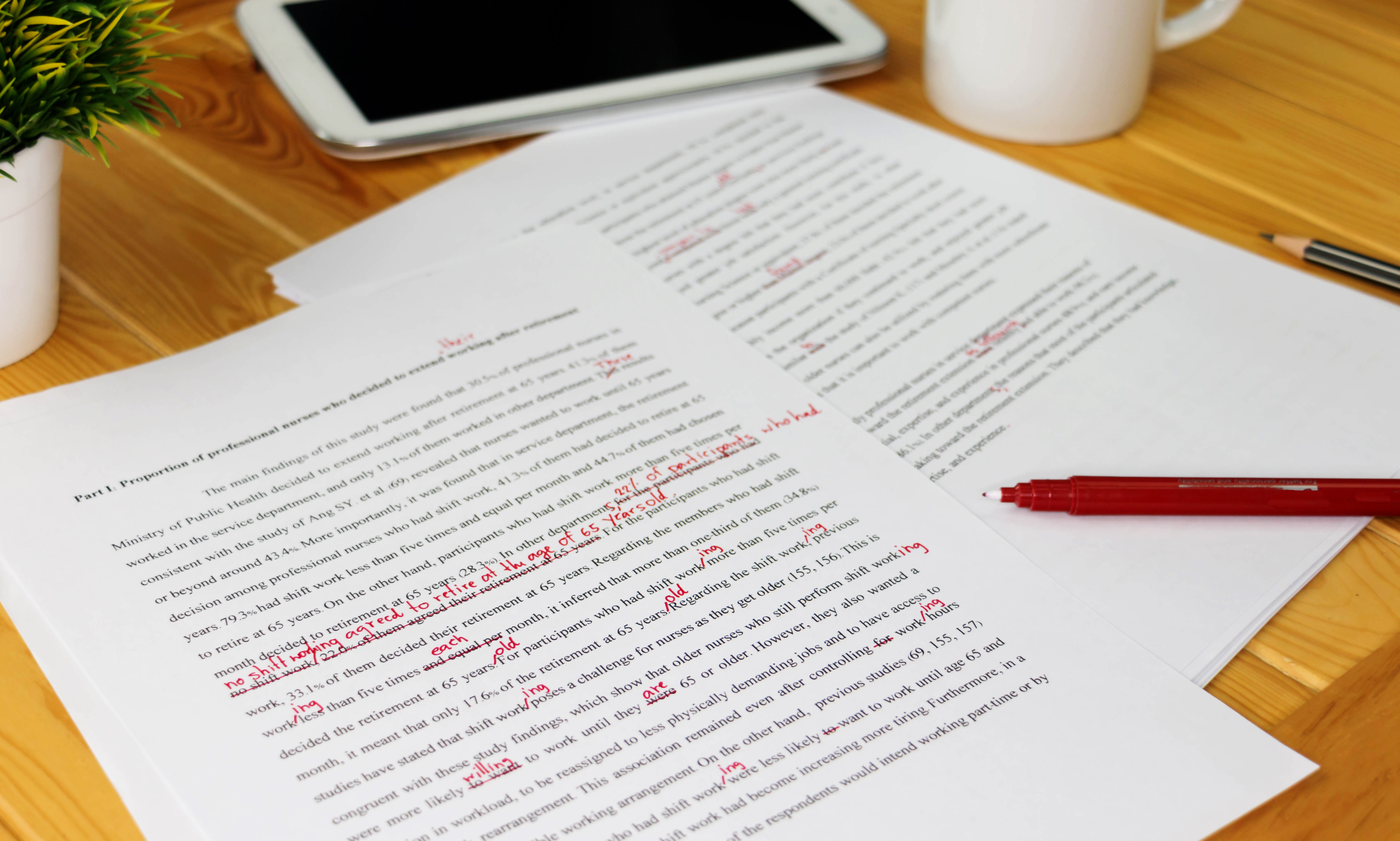- Jan 13, 2025
Edit Your Way: The Ultimate Guide to Finding Your Perfect Process
- Cassie Newell
- 0 comments
Hey there, storytelling rockstars! 🫖 Your Sassy Writing Coach here, to spill the tea about self-editing. And trust me, we're going to cover it ALL – from those "what was I thinking?" first drafts to the "chef's kiss" final manuscript. But here's the twist: we're also going to talk about how different genres need different editing approaches because what works for your gritty thriller might send your cozy mystery readers running for their chamomile tea!
Know Thyself: Understanding Your Editing Style
Before we dive into the nitty-gritty, let's figure out what kind of editor you are. Trust me, this is like finding out your writer's zodiac sign – it explains so much!
1. The Free Spirit Editor
You're the type who needs to let your creativity flow uninterrupted. The mere thought of stopping to edit makes your muse pack their bags and head to Tahiti. Signs you're a Free Spirit:
You write in bursts of inspiration
Stopping to edit breaks your flow
You prefer to "word vomit" now, clean up later
-
Your first drafts are wild but wonderful
2. The Perfectionist Editor
You can't move forward until everything behind you is just right. You're the type who edits as you go, polishing each chapter until it gleams. Signs you're a Perfectionist:
You revise each paragraph before moving on
You have a strong inner editor
Your first drafts are slower but cleaner
-
You struggle to move forward if something feels off
Genre Note: While these editing personalities work for any genre, cozy mystery writers often need to blend both approaches. Why? Because while you need the Free Spirit's creativity for those quirky characters and clever clues, you also need the Perfectionist's attention to detail for tracking your mystery elements!

The Three-Round Editing Method
Round 1: The Big Picture Edit
Focus on:
Plot structure and major arcs
Character development
World-building consistency
Theme development
Major plot holes
Example: Weak: "Sarah learned to trust again." Strong: "Sarah's journey from betrayed CEO to community volunteer showed her that trust, like her company's stock, could rise again."
Round 2: Scene-Level Polish
Focus on:
Scene structure and pacing
Character interactions and dialogue
Setting development
Emotional impact
Conflict escalation
Example: Weak: "They argued about the business deal." Strong: "Marcus slammed the contract on the mahogany desk, sending his grandfather's fountain pen clattering to the floor. 'This isn't just about profit margins, Dad.'"
Round 3: Line-Level Magic
Focus on:
Prose polish
Sentence variety
Word choice
Voice consistency
Pacing at the paragraph level
Example: Weak: "She was very angry about what he did." Strong: "Her fingers crumpled the letter, years of trust dissolving with each word of his betrayal."
A Real Talk About Editing Tools ⚒️
Here's something they don't tell you in those "one-size-fits-all" editing guides: your genre matters when choosing your editing tools. What works beautifully for steamy romance might send your horror novel screaming into the night (and not in a good way!).
Today, we're spotlighting one of the trickiest genres to edit: the cozy mystery. Why? Because while most fiction editing tools are designed for ramping up tension and adding drama, cozy mysteries need a gentler touch. They're like that friend who can deliver hard truths wrapped in a warm hug–and most editing tools haven't mastered that delicate balance.
That's why I'm breaking down editing approaches into two camps: General Fiction and Cozy Mysteries. Whether you're writing heart-pounding suspense or a small-town whodunit involving a knitting circle and a mysteriously murdered macaron baker, you'll find your perfect editing match below.
For General Fiction:
Tools should help you:
Strengthen your unique voice
Polish grammar and punctuation
Track plot threads
Enhance descriptions
Maintain consistency
Warning: Don't let tools flatten your voice or standardize your unique style!
For other considerations like Cozy Mysteries:
Tools should help you:
Track clues and red herrings
Maintain character consistency
Monitor tone and language
Organize community details
Keep violence off-page
Warning: Many editing tools don't understand cozy conventions – they might flag your intentionally gentle descriptions or quirky character traits as "problems."
The Self-Editor's Troubleshooting Guide
🗺️ Plot Problems
General Fiction Fix:
Layer in subplots
Raise personal stakes
Add unexpected twists
Deepen conflict
Example: Weak: "John needed to finish the project." Strong: "John had 48 hours to complete the project or lose the promotion he'd spent five years earning."
Cozy Mystery Fix:
Weave mystery with community life
Create cozy-appropriate stakes
Add twists that don't disturb the tone
Build suspense without violence
Example: Weak: "Sarah needed to solve the mystery." Strong: "If Sarah couldn't prove who switched the baking competition entries, the historical society would lose its funding – and her grandmother's secret recipes would be lost forever."
🧗♀️Character Issues
General Fiction Fix:
Deepen internal conflicts
Strengthen character arcs
Add complex motivations
Create meaningful relationships
Example: Weak: "Lisa didn't want to take the job." Strong: "Lisa's fingers hovered over the contract. Taking this job meant betraying everything her environmental activist mother had fought for, but refusing it meant watching her daughter's college fund disappear."
Mystery Fix:
Keep characters cozy-appropriate
Build believable amateur sleuthing reasons
Create charming quirks with purpose
Develop community connections
Example: Weak: "Mary liked to solve mysteries." Strong: "Between managing her herb shop and teaching botanical workshops, Mary's knowledge of plants made her uniquely qualified to question why deadly nightshade ended up in the community garden's tomato patch."
🏎️ Pacing Problems
General Fiction Common Issues:
Slow middles
Rush endings
Uneven chapter lengths
Missing emotional beats
Solutions:
Start scenes later
End on high points
Balance action and reflection
Layer in subplots
Cozy Mystery Specific Issues:
Too much cozy, not enough mystery
Too much mystery, not enough charm
Uneven clue distribution
Rushed resolutions
Solutions:
Blend sleuthing with daily life
Balance community scenes with an investigation
Sprinkle clues naturally
Solve mysteries through conversation and observation
📣 Voice and Style
General Fiction Approach:
Develop distinct character voices
Match tone to genre expectations
Create immersive descriptions
Build emotional resonance
Example: Weak: "The forest was scary." Strong: "Shadows stretched between the trees like grasping fingers, and every crack of a twig made her heart stutter."
Cozy Mystery Approach:
Maintain light, warm tone
Use gentle humor
Create inviting descriptions
Keep violence subtle
Example: Weak: "The victim was found dead in the garden." Strong: "The usually pristine rose garden looked wrong that morning – trampled petals and an overturned watering can told a story Mrs. Pickwick's garden club never expected to read."

Preparing for Professional Editing
Understanding Editor Types
• Developmental Editor: Story structure and character arcs
• Line Editor: Prose and flow
• Copy Editor: Grammar and consistency
When to hire: When you've taken your manuscript as far as you can alone
The Final Polish
Take a break
Read in a different format
Get beta reader feedback
Consider professional editing
🚩Remember:
Writing rules are like recipe guidelines – they're helpful until they're not! While general fiction gives you more flexibility, cozy mysteries have specific ingredients readers expect. Knowing when to follow the rules and when your story needs something different is key.
The perfect editing process is the one that works for YOU and serves YOUR story. Whether you're writing the next great American novel, or a charming mystery set in a knitting shop, embrace your unique approach to editing.
Now go forth and edit like the writing rockstar you are! And remember, chocolate is a perfectly acceptable editing tool. Just keep it away from your keyboard. 😉
Until next time, keep writing, keep slaying, and never, ever forget that your story deserves to shine!
💫 Your Sassy Writing Coach
(c) copyright Cassie Newell